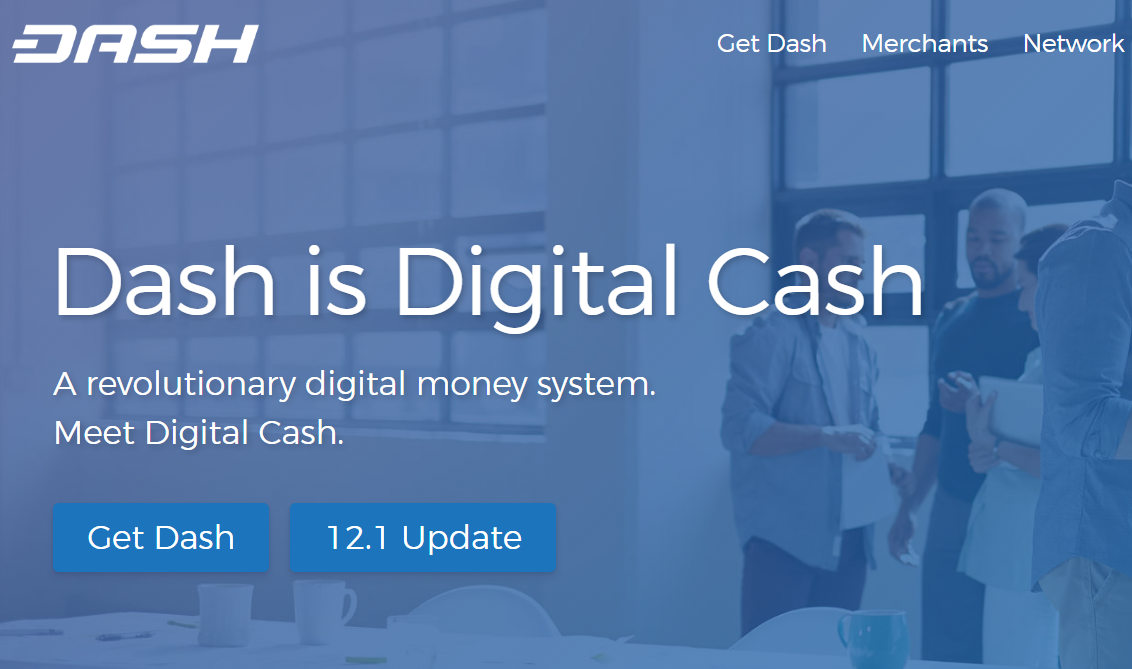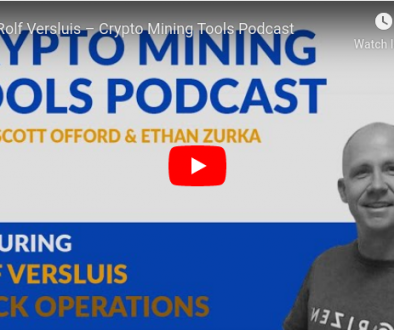Can Dash Become More Valuable than Bitcoin?
Bitcoin has problems. It is not the perfect digital money. Is it possible that some other, better crypto-currency comes along and becomes bigger than Bitcoin? If you are immersed in the Bitcoin world, that probably seems like heresy. But in the total available market of currency transactions, Bitcoin’s portion is miniscule. It is entirely possible that a better version grows alongside Bitcoin, then exceeds it. We are still in the infancy of crypto-currency, probably at less than 1% of people have even heard the word, much less know what it means.
The Bitcoin blockchain, its ledger of transactions, is open to analysis by all. Bitcoin activity can be correlated with other data to determine who is transacting with whom. Some people don’t like their transactions to be public. It is also not scaling well, as transactions take too long and cost too much for it to be used as regular money. The scaling should get fixed soon, one way or another, but it’s an issue.
Altcoins are the alternatives to Bitcoin. At last count, there are over 800 of them.
Most Altcoins are started by people by creating a copy of the Bitcoin Github repository, then making changes to it. That’s called a fork. The Bitcoin Github program continues on it’s way, and the fork of the repository creates a new coin. That’s how Litecoin, one of the first Bitcoin forks, was created.
What doesn’t get copied over is the entire Bitcoin community and ecosystem. That has to be built from the ground up. Litecoin has miners, nodes, pools, support, and a community, but not nearly the size of Bitcoin’s. Will it be successful long term? Who knows, but it does not look like much growth is happening for Litecoin these days.
Just having a different hashing algorithm is not reason enough for an Altcoin to exist. For an Altcoin to be successful, it needs to provide something that is currently lacking in the crypto-currency space. It needs a Vision, a Purpose, one that is big and unique and bold enough to draw a Community. Once this Community coalesces around the Altcoin, it takes action to realize the Vision, and draws in elements of an Ecosystem, then it will grow.
For Bitcoin or an Altcoin to survive long term, it has to have at least the following:
- Reason to exist. Bitcoin is the first, and other Coins need to carve out their own niches.
- Code that works. Processes transactions quickly and reliably, is secure, and has many useful applications. This includes software for nodes, miners, pool operators, wallets, and API’s (Application Programming Interface) to connect into other applications.
- Active community that works well together, providing leadership, direction, marketing, and product management.
- Software developers who are incentivized to update, maintain, add new features, and integrate the cryptocurrency with application providers.
- Miners who can make money processing the transactions.
- Node operators who can make money running nodes or run a node as part of another business function.
- Customers – business and users that have a use for the Coin.
- Ecosystem partners that can make money
Vision, purpose, community, and ecosystem are the main measures of Bitcoin or an Altcoin’s viability. The community and ecosystem are part of the many people necessary to make Bitcoin or an Altcoin (let’s just say Coin) work. These people include:
- Creators – the ones who come up with the idea and mathematics for how the Coin works.
- Software Developers – the people who generate, maintain, and improve the Coin software.
- Miners – the people who operate the machinery that tracks the transactions and maintain the integrity of the blockchain.
- Mining pool operators – They run the mining pools that miners join to get consistent block rewards. Pools decide what software version to adopt.
- Node Operators – people who operate the servers that broadcast transactions and maintain a copy of the Coin blockchain.
- Exchange operators – manage the transfer of funds between fiar currency and Coins.
- Ecosystem partners – people who make products and services that make the coins more useful.
- Coin owners – people who own the Coin. Or more precisely, control the private keys that allow specific Coin inputs to be sent to another key owner.
- Coin speculators – people who buy and sell between the different Coins, providing liquidity.
- Intended and Actual Users – people and organizations that have a use for the Coin.
- Regulators – Government authorities and industry organizations.
 Looked at this way, how is Bitcoin doing?
Looked at this way, how is Bitcoin doing?
The Bitcoin codebase works well. It has some issues in that it currently can’t process many transactions at a time. But it is well understood, works, and has scaled so far. It need some improvements, and the different stakeholders have different political agendas.
The miners are the big deciders in Bitcoin. They make most of the money, and the ones who ultimately make the decision on what new code gets accepted. They join their miners to the mining pools who support the policy they want. The miners want to make money forever. They want their coinbase block reward, as well as transaction payments. When the coinbase block reward goes to zero, transaction payments are going to be the only way for them to make the money they need to keep running their operation.
Miners probably operate nodes and pools as well, and I would expect they provide funding to developers. They have the datacenters, tech support, and the incentive to make the entire transaction infrastructure work. They could also employ developers that can add to and update the codebase.
There’s a lot to like about Bitcoin. It’s proven, and people understand it. The feature implementation is slow, some people say too slow. The people that are pushing for more general and broader usage are hampered by the slow changes in the main Bitcoin code. And not all features should be put into the main Bitcoin codebase.
Bitcoin serves a few different purposes for people:
- Store of value
- Investment – with assumption that it’s value will go up in future.
- Token for purchasing products in the Bitcoin industry.
- A way to purchase products internationally easily and quickly.
The first alternatives to Bitcoin were basically copies, with a few changes. They don’t meet the basic requirement for having a Purpose. Many of them are slowly dying, their community inactive, their value slowly sinking, and their miners shutting down or redirecting their machines. Litecoin and Dogecoin fall into this category.
As people have worked more with Bitcoin, there are other Altcoins developed and launched that address some of the shortcomings of Bitcoin. These are starting to come to the fore now, and this is where things get interesting.
 Dash is a fork of Bitcoin, with a few key differences:
Dash is a fork of Bitcoin, with a few key differences:
- Mining rewards are split between miners (45%), masternode owners (45%), and governance team (10%).
- Masternodes are full Dash nodes with 1000 Dash tied up for non-use.
- Masternodes assist Dash transactions by mixing and tmporary transaction input lock. This gives Dash two key features.
- Optional transaction privacy through coin mixing.
- Rapid transaction verification – 1.5 seconds
- The Dash governance team funds different projects that help the growth of Dash, including
- Marketing
- Systems Operations
- Development
- Integration with Ecosystem partners
- Dash has a very active and supportive community.
I’m excited about Dash – I participate by owning a few Masternodes, and I mine for Dash with Baikal A900 Giant ASIC miners at my small operation. They are very power efficient.
 Ethereum is very different than Bitcoin, and is designed to be able to execute automated programs. The Ethereum currency is used to pay for those programs to be run. Ethereum is better organized than Bitcoin, and has a different type of Ecosystem. Some features:
Ethereum is very different than Bitcoin, and is designed to be able to execute automated programs. The Ethereum currency is used to pay for those programs to be run. Ethereum is better organized than Bitcoin, and has a different type of Ecosystem. Some features:
- Oriented toward partnering with industry in the creation of the internet of things
- Additional tokens can be created on top of Ethereum like Augur
- Operating as a distributed computation system it is more than a currency.
 Zcash is a fork of Bitcoin that enables true optional transaction privacy through the use of zk-SNARKs and stealth addressing (read the PDF here if you want more info), mathematical constructs that allows for completely hidden transactions. It is funded by a venture capital team, who expect to get repaid with 20% of the first 4 years mining rewards. Part of that funding is also directed to the Zcash Foundation, who work to improve and extend the coin as employees of the foundation.
Zcash is a fork of Bitcoin that enables true optional transaction privacy through the use of zk-SNARKs and stealth addressing (read the PDF here if you want more info), mathematical constructs that allows for completely hidden transactions. It is funded by a venture capital team, who expect to get repaid with 20% of the first 4 years mining rewards. Part of that funding is also directed to the Zcash Foundation, who work to improve and extend the coin as employees of the foundation.
Bitcoin, Dash, Ethereum, and Zcash are definitely leaders in the crypto-currency space. But they are not the only ones that can grow and achieve a sizable percentage of users. There are other currencies that are growing and may do well also. Just a sampling:
- MAID – Distributed data storage
- NEM – Fully transparent coin being used in Japan
- AntShares – Chinese version of Ethereum (I think)
- Gulden – Regional variant of Bitcoin for the Netherlands
- Zclassic – Community version of Zcash with no corporate influence
- Ethereum Classic – Community version of Ethereum
- Steemit – Publishing token to reward good writing.
That’s where things are today. One of the exciting things about the crypto-currency space is there that there is so much growth and opportunity! Especially with the overreach of the banks, countries, and traditional currencies, there is so much of a need for people to be able to conduct transactions with each other in a way that maintains value.
Is Bitcoin destined to be the largest crypto-currency, forever? It might, because it was the first. But it also might not. An Altcoin like Dash might be able to rise up and overtake Bitcoin, if it was more useful, had a better community, and focused on user adoption better than Bitcoin and its Ecosystem does.





July 13, 2017 @ 1:38 am
Hello,
Do you use the Baikal ASIC miners mainly because of power efficiency? What is the trade-off, and also the motivation behind paying so much for a miner? Do you have these setup in addition to your GPU rigs, or do you use them together in one rig operation? Thank you!
July 13, 2017 @ 1:51 am
You answered my question in another post as to what the Baikal miner is. Thanks!